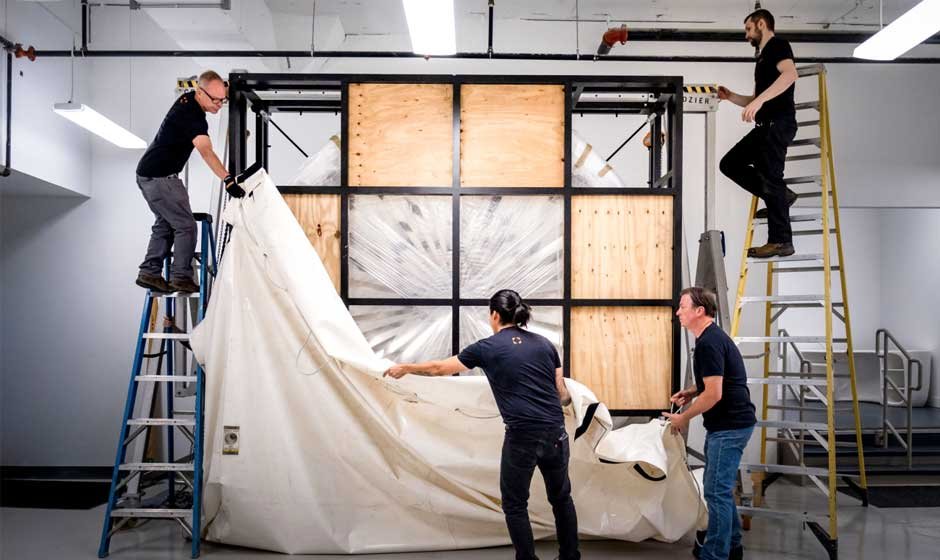Creating large-scale art installations is an awe-inspiring feat—one that merges artistic vision with mechanical ingenuity. Behind every towering sculpture, suspended structure, or immersive environment is a complex dance of design, logistics, and physics. Central to this process is rigging, the unsung hero that elevates grand creative ideas off the ground—literally.
What Is Rigging in the World of Art?
In industrial terms, rigging refers to the system of ropes, chains, slings, and lifting equipment used to move or secure heavy objects. In art, the concept is similar but infused with creative intention. Rigging enables artists and exhibition teams to lift, suspend, rotate, and position pieces that would otherwise be immovable.
Whether it’s suspending a 3,000-pound mirrored orb from a gallery ceiling or hoisting a 20-foot sculpture into a park, rigging provides the essential physical support for large-scale works. It also ensures that the installation is safe, stable, and aligns with the artist’s vision.
When Art Gets Bigger, the Stakes Get Higher
Bigger installations entail more than merely larger materials. With size comes increased complexity. Factors such as load calculations, material strength, and environmental considerations like wind or ground stability must be considered.
That’s where engineering meets artistry. Riggers often collaborate closely with structural engineers, fabricators, and artists to ensure the final work looks good and holds up safely and sustainably. This teamwork guarantees that art is both expressive and structurally sound.
Here are a few critical ways rigging makes these projects possible:
- Precision Placement
Even minor misalignments can distort the intended appearance of an installation or compromise its stability. Rigging systems like chain hoists, cable pulleys, and spreader bars to enable teams to maneuver components effectively. This is especially crucial for suspended pieces or multi-part sculptures that must align perfectly in three-dimensional space.
- Temporary Yet Secure Setups
Many large-scale installations are temporary—debuting at festivals, galleries, or public spaces for a limited time. Rigging enables the setup and breakdown of these works without harming them or the surrounding environment. Quick-disconnect shackles, slings, and modular supports facilitate repeat installations or touring exhibitions.
- Creative Suspension and Movement
Artists are no longer restricted to static floor-based displays. Rigging enables floating sculptures, rotating mobiles, and kinetic installations. It opens new dimensions—literally and creatively—allowing the creation of immersive environments that challenge gravity and invite interaction.
Real-World Examples of Art Rigging
Some of the world’s most iconic installations owe their existence to expert rigging:
- Christo and Jeanne-Claude’s “The Gates” in Central Park used industrial lifting and anchoring systems to install 7,503 fabric-covered gates across 23 miles of pathways.
- Olafur Eliasson’s “The Weather Project” at the Tate Modern required the suspension of a massive semi-circular sun and mirrors—rigged with engineering-grade support to give the illusion of a glowing, weightless orb.
- At Burning Man, massive sculptures like “The Man” or “Temple” rely on cranes, slings, and bracing systems that involve months of rigging planning and execution.
Safety Is Part of the Art
While rigging opens up creative possibilities, it also introduces risks. Improper lifting can lead to damage, injuries, or catastrophic failure. That’s why professional riggers use strict safety protocols, load-rated gear, and often conduct load tests or simulations before the final lift. For artists, understanding the basics of rigging—such as sling angles, weight distribution, and attachment points—can lead to more informed designs. Collaborating with riggers early in the creative process helps avoid costly rework and unlocks innovative display options.
Bridging the Gap Between Creativity and Capability
Rigging isn’t merely a technical necessity—it’s an extension of the artist’s toolkit. By embracing its potential, creatives can dream bigger and execute ideas previously deemed impossible.
Next time you stand beneath a suspended installation or marvel at an enormous sculpture towering over a plaza, take a moment to appreciate the hidden networks of chains, pulleys, and anchors that work quietly behind the scenes. Without them, many of today’s most powerful visual experiences simply wouldn’t exist.










